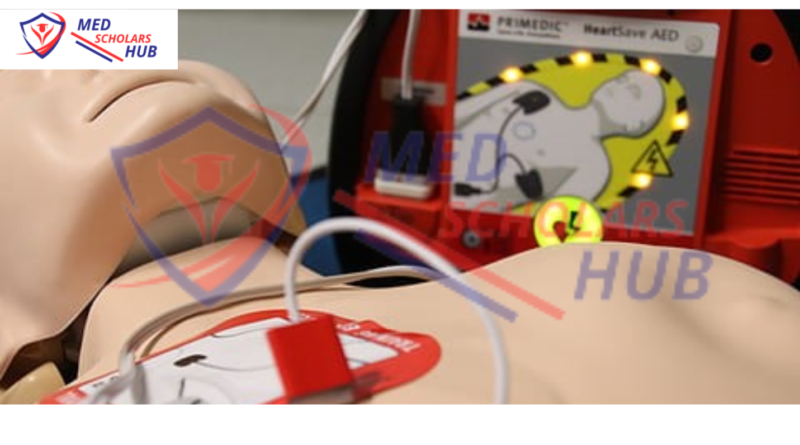The Course Outline of Corporate Safety, Security, and First Aid Training
Corporate safety, security, and first aid training are essential for any organization to ensure the well-being of its employees and protect its assets. This comprehensive training program equips participants with the necessary skills and knowledge to handle emergency situations effectively. In this article, we will delve into the course outline of corporate safety, security, and first aid training, highlighting its key components and their importance.
Importance of First Aid Training:
First Aid Training is a crucial aspect of corporate safety and security. It equips employees with the skills to respond promptly and appropriately in medical emergencies. The course covers topics such as CPR (Cardiopulmonary Resuscitation), basic wound care, choking emergencies, and assessing vital signs. Participants learn how to provide immediate care until professional medical help arrives, potentially saving lives and minimizing the severity of injuries.

Related Article: The Course Outline of Corporate Safety, Security, and First Aid Training
Course Outline of Corporate Safety
1. Introduction to Workplace Safety:
The course begins with an introduction to workplace safety, emphasizing the importance of creating a safe and secure working environment. Participants learn about common workplace hazards and how to identify and mitigate them. Topics covered include fire safety, electrical safety, hazardous material handling, and personal protective equipment (PPE) usage. By understanding these risks and safety measures, employees can prevent accidents and injuries in the workplace.
2. Emergency Preparedness:
In this section, participants are trained on emergency preparedness protocols, including evacuation procedures, emergency communication systems, and assembly points. They learn how to respond effectively to various emergencies, such as fires, natural disasters, or security threats. The training also focuses on developing an emergency response plan and conducting drills to ensure everyone knows their roles and responsibilities during critical situations.
3. Security Awareness and Threat Management:
Corporate safety and security encompass more than just physical safety. This segment of the training addresses security awareness and threat management. Participants learn how to identify suspicious activities, handle unauthorized access, and report security incidents.
Moreover, the course covers topics like cyber security, social engineering, and fraud prevention, equipping employees with the skills to protect sensitive information and assets.
4. Basic Life Support:
Basic Life Support (BLS) is a vital component of corporate first aid training. Participants learn how to respond to life-threatening emergencies, such as cardiac arrest or choking. The course provides hands-on training in CPR techniques, using automated external defibrillators (AEDs), and managing airway obstructions. By acquiring these skills, employees can confidently provide immediate assistance until professional medical help arrives, significantly increasing survival rates.

5. Injury Management and Trauma Care:
Accidents and injuries can occur in any workplace. This module focuses on injury management and trauma care. Participants learn how to assess injuries, control bleeding, immobilize fractures, and manage burns and other common workplace injuries. The training also covers the importance of infection control and proper wound dressing techniques. By understanding these principles, employees can provide effective first aid, prevent further complications, and promote faster recovery.
6. Psychological First Aid:
Addressing the mental well-being of employees is crucial in the corporate setting. This section of the training introduces participants to the concept of psychological first aid. It equips them with the skills to provide initial emotional support to individuals experiencing distress or trauma. Participants learn active listening techniques, empathy, and how to connect individuals with appropriate resources for further assistance.
Related Article: Read This Before You Go for Emergency Medicine Studies
Workplace Health and Safety Training Course Duration:
A workplace health and safety training course’s length can change based on the particular needs and goals of the organization. These program are typically developed to offer thorough instruction on a variety of workplace safety, security, and first aid topics. Depending on the breadth of knowledge and abilities to be covered, the time frame can be anywhere from a few hours to several days.
Course Objectives:
- What is work health and safety?
- Justify the significance of workplace health and safety.
- Plan your emergency preparedness.
- Define who is responsible for what in the management of workplace health and safety.
- Provide guidance on how to recognize dangers and assess the risks they present Describe the use of risk-control techniques.
- Know how to prevent manual labor injuries
- Describe the positions and duties involved in emergency management.
- Describe the possible repercussions of violating work health and safety laws.
- Describe the nature of an accident and list its direct and indirect causes.
- Describe the positions and duties involved in emergency management.
- Learn how fires spread and how to prevent them.

Here are a few reputable institutes known for their safety courses:
- National Safety Council (NSC)
- Occupational Safety and Health Administration (OSHA) Training Institute
- American Society of Safety Professionals (ASSP)
- British Safety Council
- National Examination Board in Occupational Safety and Health (NEBOSH)
- Canadian Centre for Occupational Health and Safety (CCOHS)
- International Institute of Risk and Safety Management (IIRSM)
- Safety Institute of Australia (SIA)
- Institution of Occupational Safety and Health (IOSH)
- Royal Society for the Prevention of Accidents (RoSPA)
Conclusion:
Corporate safety, security, and first aid training play a vital role in creating a safe and secure work environment. By equipping employees with the necessary skills and knowledge, organizations can minimize risks, prevent accidents, and respond effectively in emergencies. The comprehensive course outline covers topics ranging from first aid and workplace safety to security awareness and psychological support. Investing in such training not only safeguards employees but also contributes to the overall success and well-being of the organization.




